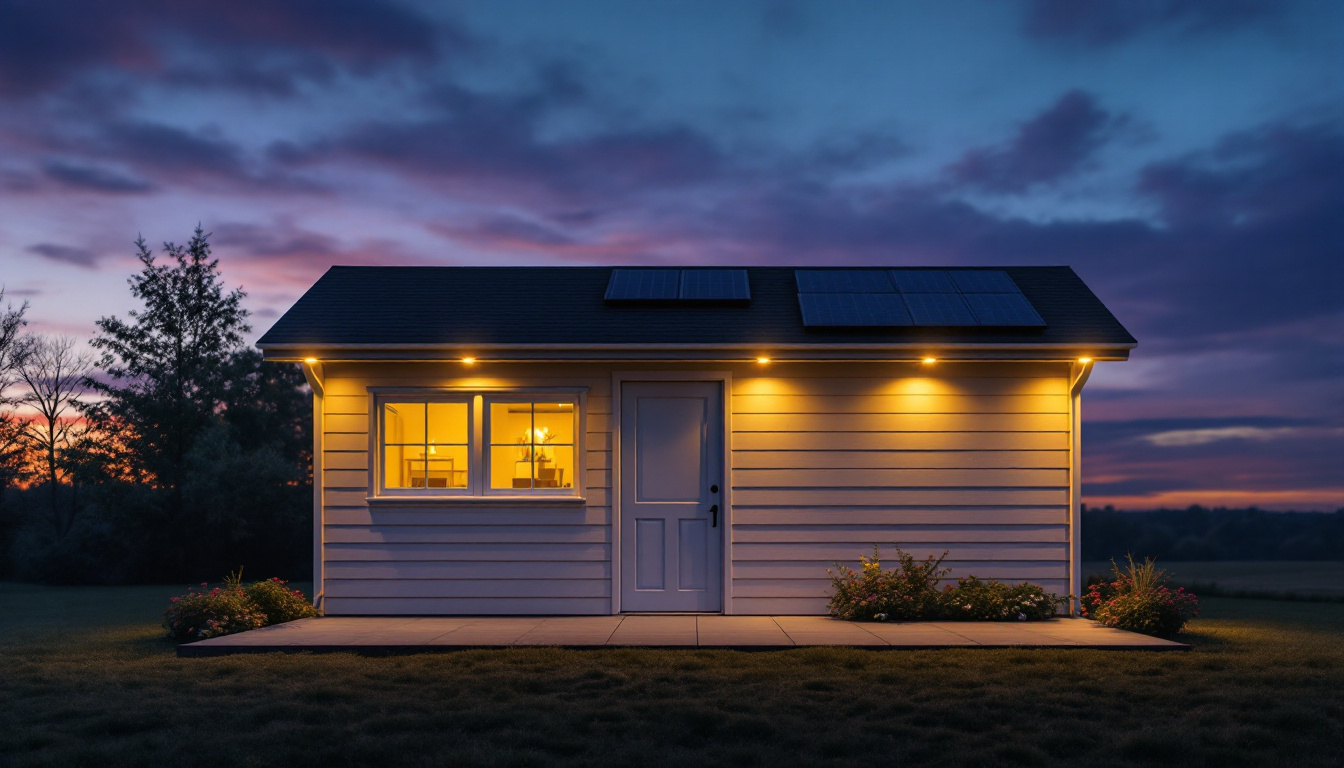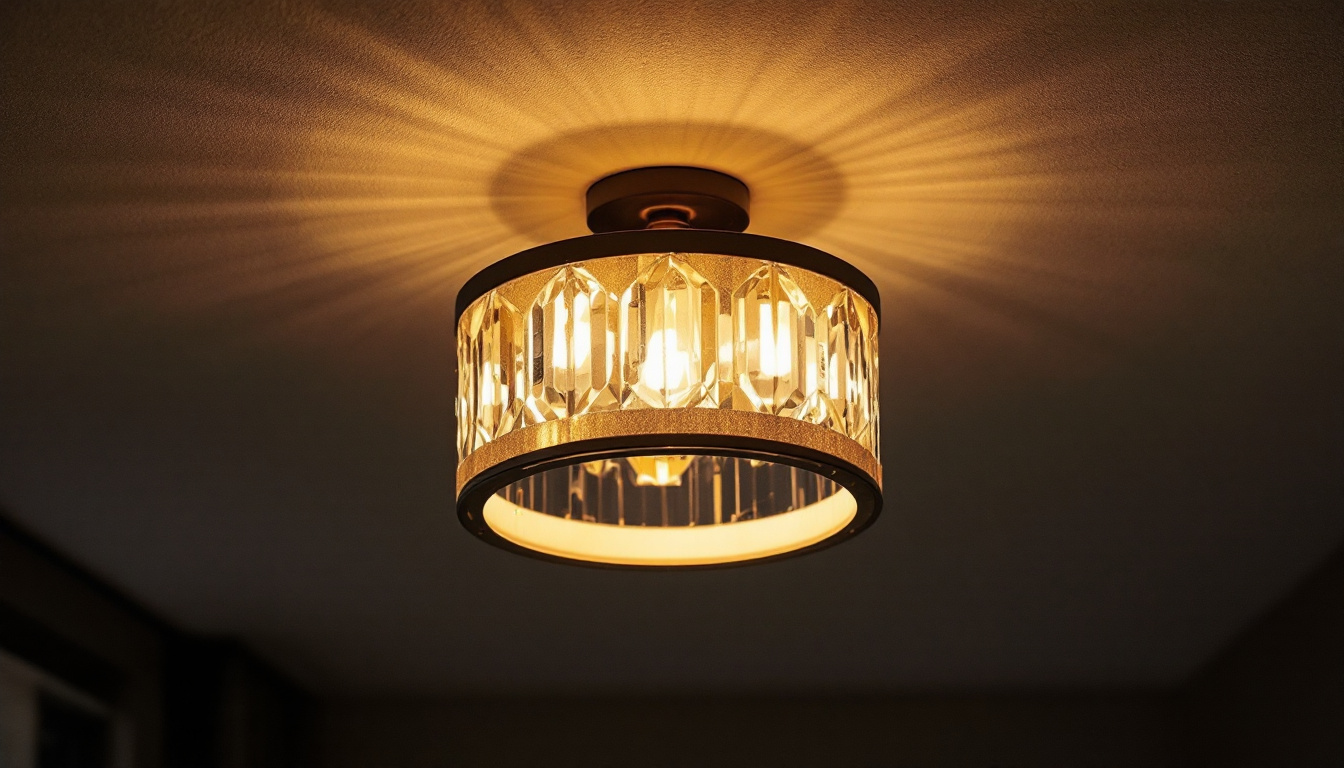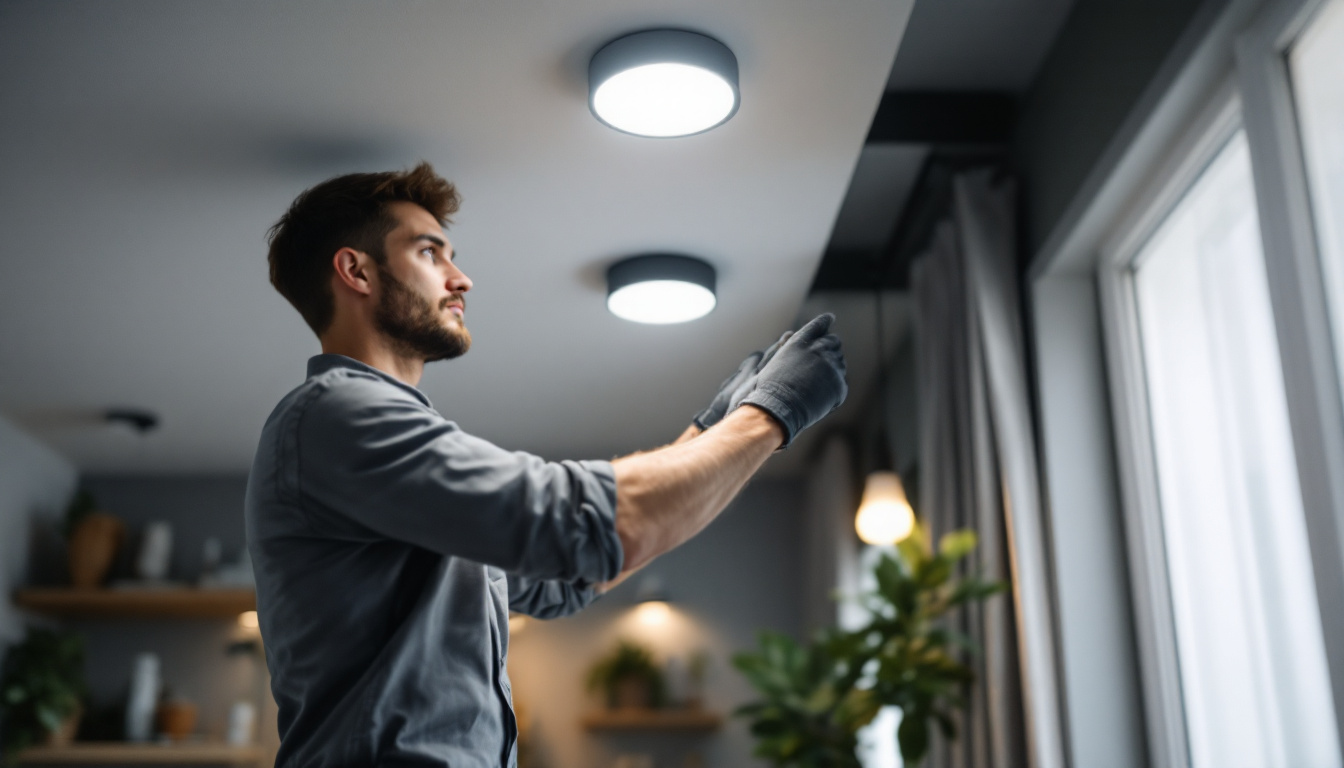
As the demand for sustainable energy solutions continues to rise, solar-powered lighting systems have emerged as a popular choice for various applications, including sheds. For lighting contractors, understanding the nuances of solar-powered lights is essential for providing clients with effective and efficient solutions. This article outlines the do’s and don’ts of installing solar-powered lights for sheds, ensuring that contractors can deliver high-quality results while maximizing customer satisfaction.
Before diving into the specifics of installation and design, it’s crucial to grasp the fundamentals of solar power. Solar lights operate by converting sunlight into electricity, which is then stored in batteries for later use. This process allows for off-grid lighting solutions, making them particularly appealing for sheds that may not have access to traditional electrical systems. The ability to harness solar energy not only promotes sustainability but also empowers individuals to take control of their energy consumption, especially in remote areas where conventional electricity is either unavailable or unreliable.
A typical solar lighting system consists of several key components: the solar panel, battery, LED light, and a controller. The solar panel captures sunlight, converting it into electrical energy. This energy is stored in the battery, which powers the LED light when needed. The controller manages the flow of electricity, ensuring that the lights operate efficiently. Each of these components is designed to work in harmony, optimizing the performance of the system and extending its lifespan. For instance, modern solar panels are often made with advanced materials that enhance their efficiency, allowing them to generate more power even in less-than-ideal weather conditions.
Understanding these components is essential for contractors, as it allows for informed decisions regarding the selection and installation of solar lights. Each component plays a vital role in the overall performance and longevity of the lighting system. Additionally, advancements in technology have led to the development of smart controllers that can adjust the brightness of the lights based on ambient light levels, further improving energy efficiency and user experience.
Solar-powered lights offer numerous advantages, making them an attractive option for sheds. Firstly, they are energy-efficient, reducing electricity costs for homeowners. Additionally, solar lights are environmentally friendly, contributing to a reduction in carbon footprint. By utilizing renewable energy, homeowners can significantly decrease their reliance on fossil fuels, promoting a more sustainable lifestyle.
Moreover, the installation of solar lights is often simpler than traditional electrical systems, as they do not require extensive wiring or permits. This can lead to lower installation costs and quicker project turnaround times, enhancing overall customer satisfaction. Furthermore, solar lights are designed to be durable and weather-resistant, ensuring that they can withstand harsh outdoor conditions. This resilience not only prolongs their lifespan but also reduces maintenance needs, making them a practical choice for those looking to enhance their outdoor spaces without the hassle of frequent upkeep.
When working with solar-powered lights for sheds, there are several best practices that lighting contractors should follow to ensure successful installations and satisfied clients.
One of the most critical steps in installing solar lights is assessing the location of the shed. The effectiveness of solar lighting is heavily dependent on the amount of sunlight the solar panels receive. Contractors should evaluate the surrounding environment, considering factors such as nearby trees, buildings, and other obstructions that may cast shadows on the panels.
Additionally, the orientation of the solar panels should be optimized for maximum sun exposure. Ideally, panels should face south in the Northern Hemisphere and north in the Southern Hemisphere to capture the most sunlight throughout the day.
Not all solar lights are created equal. It is essential for contractors to select high-quality products that are durable and efficient. Look for lights with reliable batteries, robust solar panels, and energy-efficient LEDs. Investing in quality products can lead to fewer maintenance issues and longer-lasting installations, ultimately benefiting both the contractor and the client.
Furthermore, contractors should consider the warranty and customer support offered by manufacturers. A solid warranty can provide peace of mind and assurance of product quality, while responsive customer support can be invaluable for troubleshooting and assistance.
Education is key to ensuring that clients understand the benefits and limitations of solar-powered lights. Contractors should take the time to explain how the system works, including the importance of sunlight exposure and battery maintenance.
Additionally, discussing the potential need for supplemental lighting or backup systems can help set realistic expectations. By providing clients with comprehensive information, contractors can foster trust and enhance the overall customer experience.
While there are many best practices to follow, there are also common pitfalls that lighting contractors should avoid when working with solar-powered lights for sheds.
One of the most significant mistakes contractors can make is underestimating the importance of battery capacity. The battery is responsible for storing energy, and its capacity directly impacts the performance of the lighting system. Contractors should ensure that the battery can hold enough charge to power the lights for the desired duration, especially during periods of low sunlight.
It’s also important to consider the type of battery used. Lithium-ion batteries tend to offer better performance and longevity compared to traditional lead-acid batteries. Selecting the right battery can significantly enhance the reliability of the solar lighting system.
Even though solar lights often require less regulation than traditional electrical systems, it is still vital for contractors to be aware of local laws and regulations. Some areas may have specific guidelines regarding the installation of solar-powered systems, including zoning laws or building codes.
Contractors should conduct thorough research to ensure compliance with all applicable regulations. Failing to do so can lead to fines, project delays, and potential legal issues, which can tarnish a contractor’s reputation.
Maintenance is a crucial aspect of ensuring the longevity and effectiveness of solar-powered lights. Contractors should advise clients on the importance of regular maintenance, including cleaning the solar panels and checking battery health. Dust, dirt, and debris can accumulate on the panels, reducing their efficiency and overall performance.
Additionally, clients should be informed about the signs of potential issues, such as dimming lights or inconsistent performance. By encouraging proactive maintenance, contractors can help clients avoid costly repairs and ensure that the solar lighting system continues to function optimally.
Designing an effective solar lighting system for sheds involves several considerations that can impact both functionality and aesthetics. Lighting contractors should take the time to plan the layout and design of the system carefully.
The placement of solar lights is crucial for achieving optimal illumination. Contractors should consider the primary functions of the shed and the areas that require the most light. For instance, if the shed is used for storage, brighter lights may be needed in specific areas to enhance visibility.
Additionally, contractors should think about the height and angle of the lights. Mounting lights too high may reduce their effectiveness, while lights placed too low may create shadows. A balanced approach to placement can ensure that the shed is well-lit and functional.
Incorporating motion sensors into solar lighting systems can enhance both security and energy efficiency. Motion sensors allow lights to activate only when movement is detected, conserving battery life and reducing unnecessary energy consumption.
Contractors should consider the specific needs of the client when deciding whether to include motion sensors. For instance, if the shed is frequently accessed, continuous lighting may be more appropriate. However, for security purposes, motion-activated lights can deter potential intruders.
The solar lighting industry is continually evolving, with new technologies and trends emerging regularly. Lighting contractors should stay informed about these developments to provide clients with the best possible solutions.
Smart technology is making its way into solar lighting systems, allowing for increased control and customization. Features such as smartphone apps and remote control capabilities enable users to adjust settings, monitor battery levels, and receive alerts about system performance.
Contractors should explore the potential benefits of integrating smart technology into solar lighting systems. This can enhance user experience and provide clients with added convenience and functionality.
Advancements in battery technology are also shaping the future of solar lighting. New battery types, such as lithium iron phosphate (LiFePO4), offer improved safety, longevity, and performance compared to traditional batteries. Staying updated on these advancements can help contractors select the best options for their clients.
By embracing new technologies and innovations, lighting contractors can enhance the quality and efficiency of their solar lighting installations, ultimately leading to greater customer satisfaction.
Solar-powered lights for sheds present an excellent opportunity for lighting contractors to provide sustainable and efficient lighting solutions. By following the do’s and don’ts outlined in this article, contractors can ensure successful installations that meet client needs while adhering to best practices.
With a thorough understanding of solar technology, careful planning, and a commitment to quality, lighting contractors can thrive in the growing market for solar lighting. As the industry continues to evolve, staying informed about trends and advancements will further enhance the ability to deliver exceptional results.
In summary, solar-powered lights not only contribute to energy savings and environmental sustainability but also offer a versatile lighting solution for sheds. By leveraging the insights shared in this article, lighting contractors can position themselves as knowledgeable professionals in this expanding field.
Ready to elevate your lighting installations with the best solar-powered solutions on the market? Look no further than LumenWholesale, where we provide lighting contractors with exceptional, spec-grade lighting products at unbeatable wholesale prices. Our commitment to quality and affordability means you can access a wide range of reliable, high-performance lighting options for your shed projects and beyond. Plus, with the convenience of free shipping on bulk orders, you can enjoy premium lighting without hidden fees or compromises. Don’t miss out on the perfect blend of quality, affordability, and convenience. Take the next step in sustainable lighting by visiting Wholesale Lighting at the Best Value today.

Discover the essential guide for lighting contractors with our comprehensive handbook on fluorescent tube light fixtures.

Discover how lighting contractors can enhance their projects and boost client satisfaction with ceiling mounted light fixtures.

Discover the top challenges lighting contractors face when working with recessed lighting cans.

Discover the transformative advantages of electric tools for lighting contractors.